With many relatively similar small moths around, is often hard to distinguish them at first sight and immediately be sure what family a species belongs to. With the protagonists of today's insect-oriented post, that isn't the case. Pterophoridae, commonly known as plume moths, can't be easily mistaken for any other family of Lepidoptera.
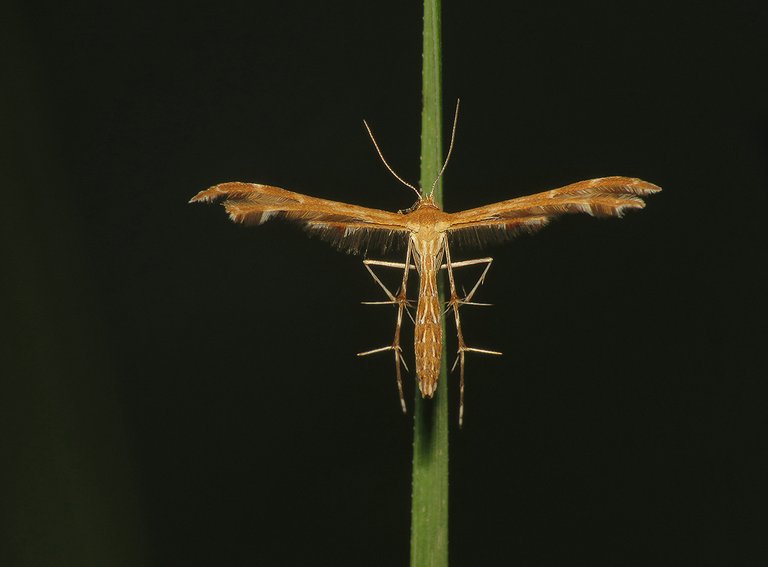
The form of their weird wings sets them apart very well.
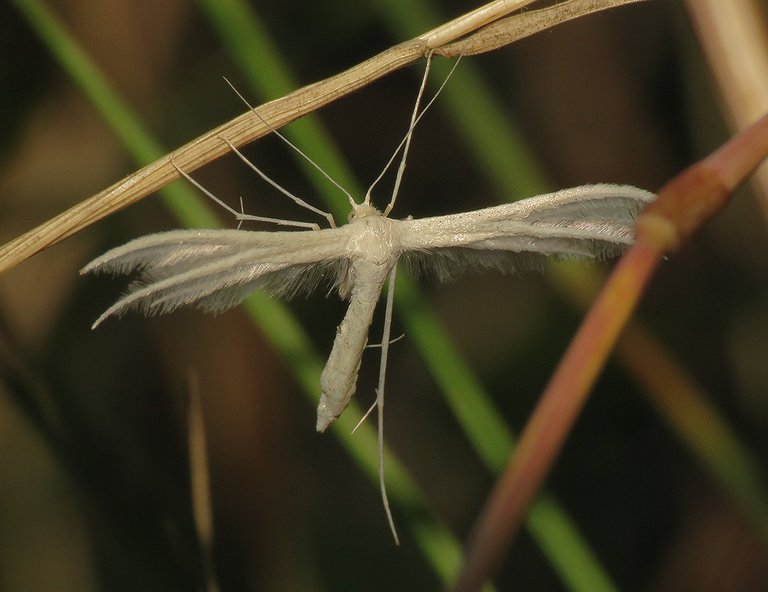
I can say that I encounter these interesting moths very often in the meadows at dusk, but only because there is one specific species that is very common and easy to see in this area. The Pterophorus pentadactylus. Commonly known as the white plume moth. You can see it in this photograph.
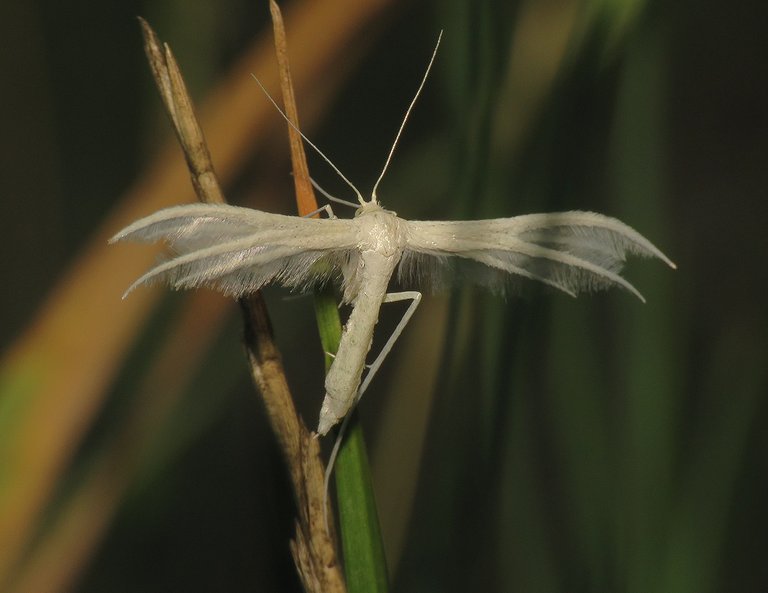
The larvae feed on leaves and flowers of various bindweeds, plants from the Convolvulaceae family. In the meadows where all the photographs you'll see in this post were taken, the Convolvulus arvensis is the bindweed that supports them. Adults feed on various herbaceous plants in bloom where they consume nectar.
As I said before, to come across this moth in the evening, isn't unusual. But a couple of days ago, after taking these shots ...
... I saw another interesting species from the same family. The Cnaemidophorus rhododactylus. Although widespread throughout the northern hemisphere, in my experience, this moth is a rare encounter here where I live. I saw it only a couple of times in my life.
These two photographs were taken under the shrubs at the edge of the meadows when the moth landed on some thread and remained hanging there for a minute or two. The larvae of this species feed on various roses. The Rosa canina wild rose in this particular habitat, I suppose.
To see two Pterophoridae species in the same place and on the same evening is, from my experience, pretty unusual. But that's not all. I encountered and photographed one more Pterophoridae on that occasion.
Here you can see a confusing little moth that I wasn't able to identify. It could be the Capperia hellenica. The Crombrugghia distans. Or the Oxyptilus pilosellae. The tree species I just mentioned have a very similar appearance.
This is the last Pterophoridae you'll see here, but the post goes on ...
... with some other insects that I encountered on my evening rambling across the meadow. Here you can see the Deraeocoris rubber, a bug from the Miridae
family.
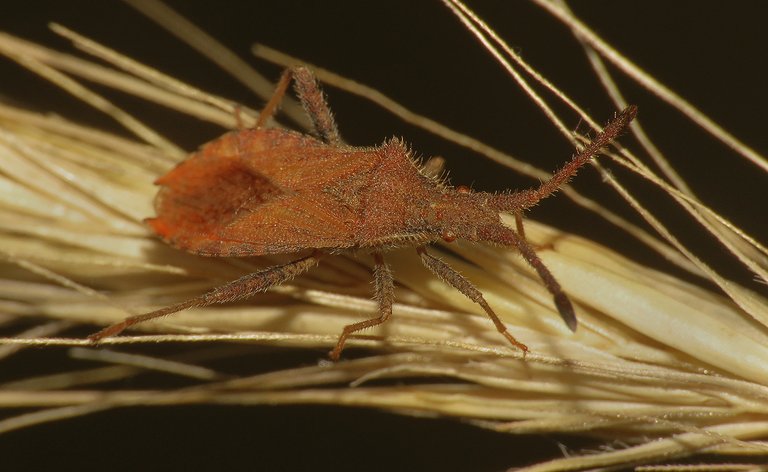
This is some bug from the Coreidae family.
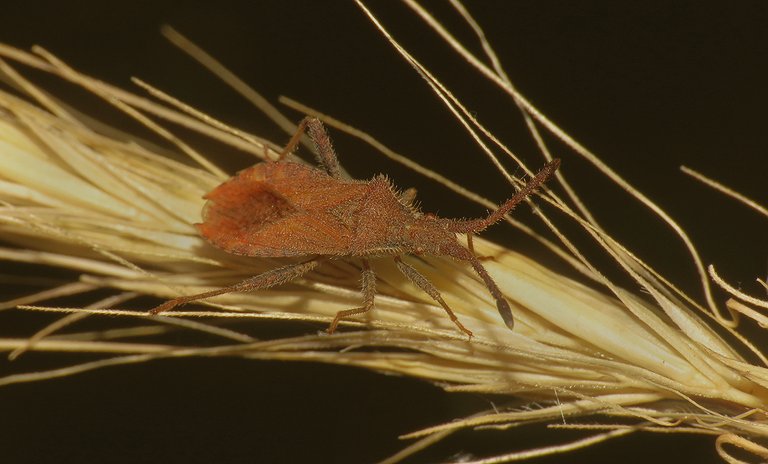
Can't tell you the exact species. Never saw this hairy one before.
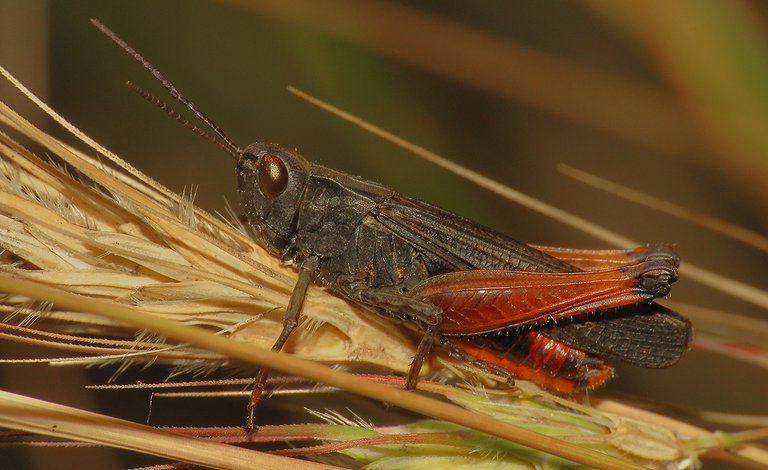
This is a grasshopper, for a change. The Omocestus rufipes.
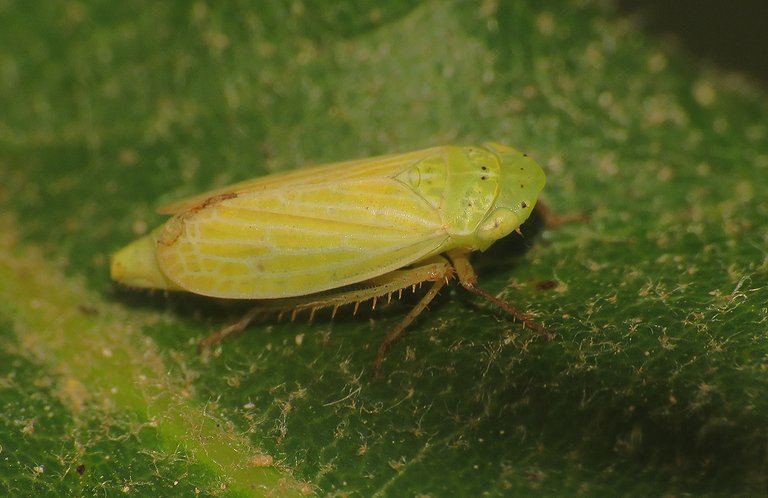
The Graphocraerus ventralis, a leafhopper from the Cicadellidae family, was resting on the leaf of an oak tree ...
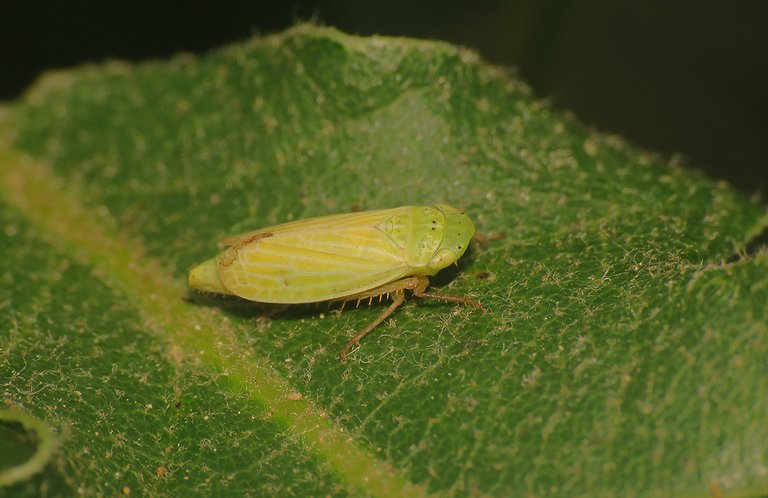
... that grew among the shrubs on the edge of the meadow.
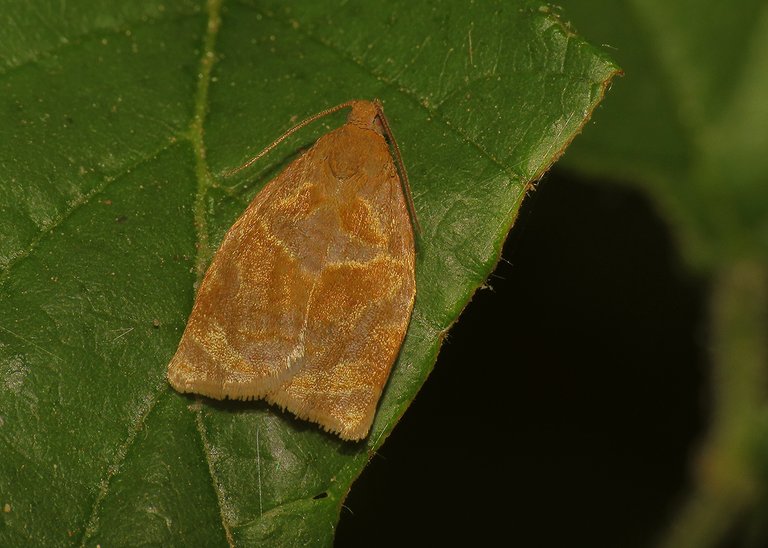
And now, for the end, another moth. Nope. Not a Pterophoridae this time. This is some small species from the Tortricidae family.
Before the usual disclaimer that states that the photographs are my work, I'll give you some links to the sites I use to identify the species and to get bits of information that I didn't know before.
https://www.leps.it/ This is a great site that can help you identify moths and butterflies if you are in Europe or North Africa.
https://en.wikipedia.org/wiki/Pterophoridae This is a Wikipedia page on Pterophoridae.
https://www.britishbugs.org.uk/gallery.html The focus of this site is the British Hemiptera, but many species that live there live throughout Europe so it can help. Even if you don't find the exact species, it can give you an idea of what family and genus your bug can be, and then you continue searching deeper through the meandering Internet.
https://uk.inaturalist.org/taxa/129485-Pterophorus-pentadactyla This is all about the White plume moth.
AND THAT'S IT. AS ALWAYS IN THESE POSTS ON HIVE, THE PHOTOGRAPHS ARE MY WORK - THE END.
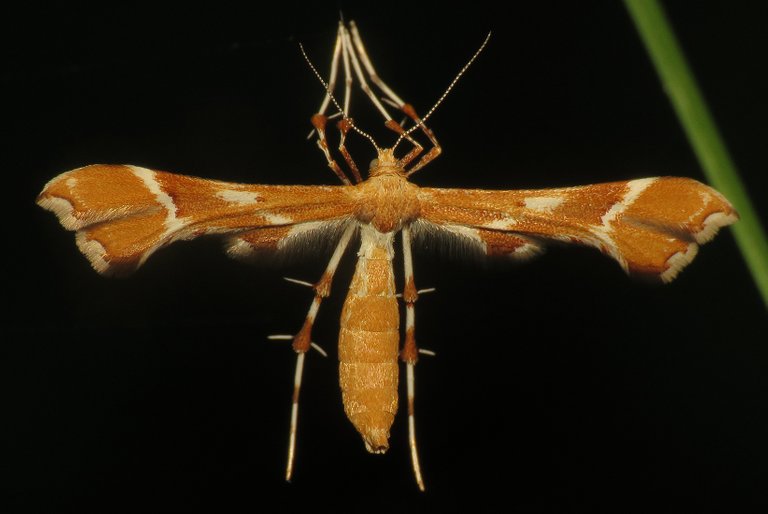

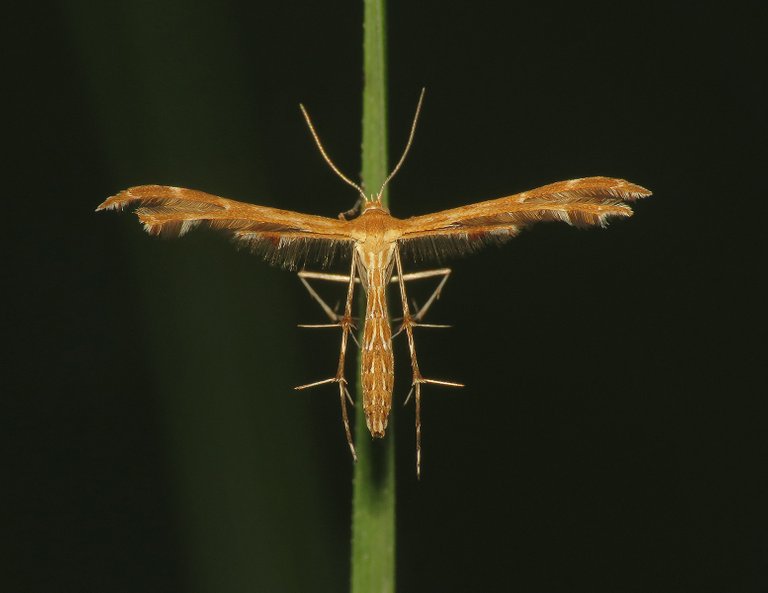
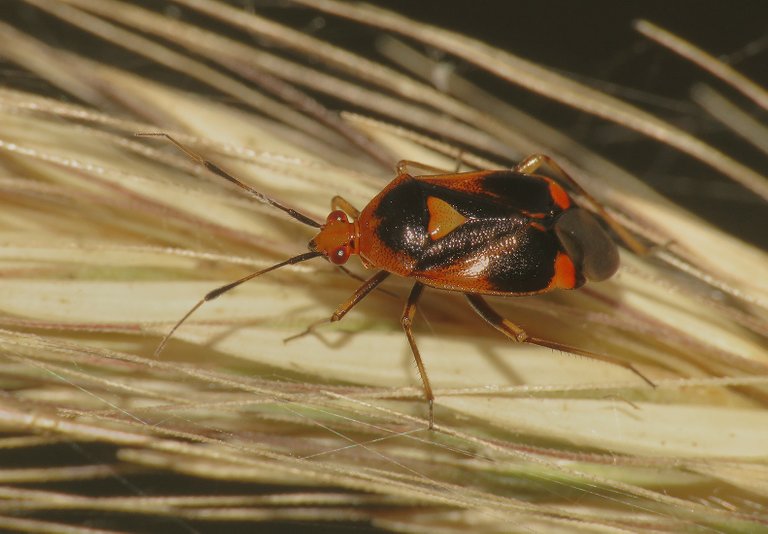
We appreciate your work and your post has been manually curated on behalf of Insects Of The World Community. It will be added to the weekly curation report. Keep up the good work.
Thank you 🙂
Fascinating creatures. Almost like Pterodactyls :D
@tipu curate
Upvoted 👌 (Mana: 12/42) Liquid rewards.
I would not have guessed the first moths were such. They are very odd looking ones! But I did love the last one, the small species from the Tortricidae family.
Yes with those long legs and narrow wings they look a bit like some strange mosquitoes with feathers.
Exactly!
It is good to learn from your stories and pictures!
!PGM
BUY AND STAKE THE PGM TO SEND A LOT OF TOKENS!
The tokens that the command sends are: 0.1 PGM-0.1 LVL-2.5 BUDS-0.01 MOTA-0.05 DEC-15 SBT-1 STARBITS-[0.00000001 BTC (SWAP.BTC) only if you have 2500 PGM in stake or more ]
5000 PGM IN STAKE = 2x rewards!
Discord
Support the curation account @ pgm-curator with a delegation 10 HP - 50 HP - 100 HP - 500 HP - 1000 HP
Get potential votes from @ pgm-curator by paying in PGM, here is a guide
I'm a bot, if you want a hand ask @ zottone444
These are glorious gems that many eyes would overlook in the brilliant colors of summer ... but I am glad you saw and shared them!
Beautiful and special creatures, always amazing.
!PGM
!LOLZ
!LUV
!MEME
BUY AND STAKE THE PGM TO SEND A LOT OF TOKENS!
The tokens that the command sends are: 0.1 PGM-0.1 LVL-2.5 BUDS-0.01 MOTA-0.05 DEC-15 SBT-1 STARBITS-[0.00000001 BTC (SWAP.BTC) only if you have 2500 PGM in stake or more ]
5000 PGM IN STAKE = 2x rewards!
Discord
Support the curation account @ pgm-curator with a delegation 10 HP - 50 HP - 100 HP - 500 HP - 1000 HP
Get potential votes from @ pgm-curator by paying in PGM, here is a guide
I'm a bot, if you want a hand ask @ zottone444
(8/10) gave you LUV. H-E tools | my wallet | discord | community | <><
H-E tools | my wallet | discord | community | <><
HiveBuzz.me NFT for Peace
lolztoken.com
But it folded.
Credit: reddit
$LOLZ
Use the !LOL or !LOLZ command to share a joke and an $LOLZ
(8/10)@borjan, I sent you an on behalf of @brianhuang
Credit: memess
Earn Crypto for your Memes @ hiveme.me!
Your photography is truly extraordinary, my friend.
Nice focus that best friends take at night